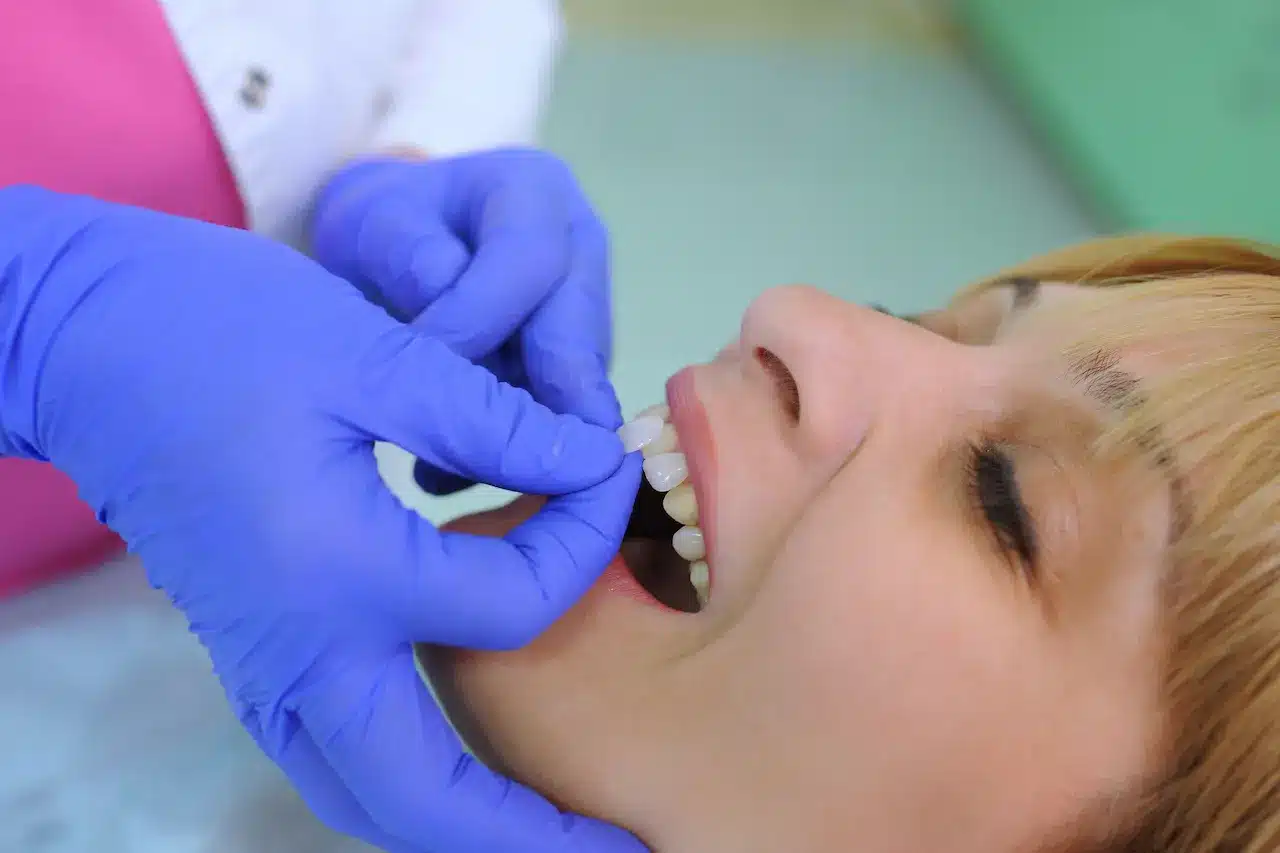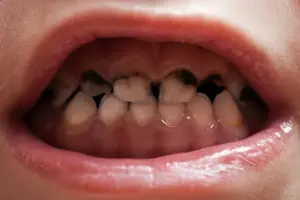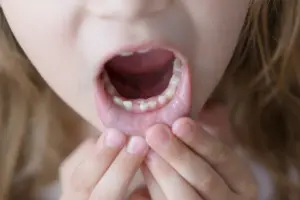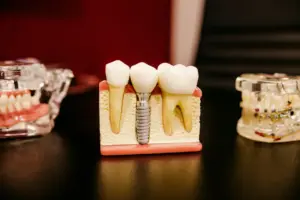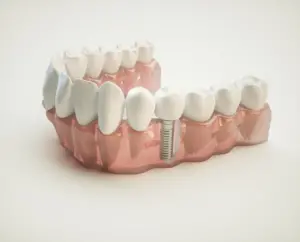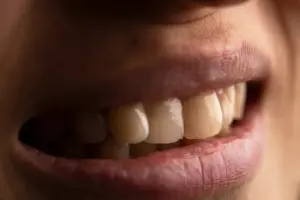Invisalign vs. Veneers Comparison
There are many ways to improve your smile if you’re self-conscious. Invisalign can improve your smile, but it does so in a different way. Our patients often ask us which is better: Invisalign or veneers. The answer to this question depends on your current smile and the state of your teeth.
Table of Contents
ToggleInvisalign
Invisalign has been used by over 14 million people to improve the appearance of their smiles and straighten their teeth. Invisalign is an alternative to bracket braces. It uses clear trays that help correct the teeth. Treatment can correct a variety of issues in the mouth.
- Overbite is when the upper teeth protrude significantly.
- Underbite is when the lower arch extends beyond the upper arch
- Gaps between teeth
- Overcrowded or teeth that are crowded together
- Open bite is when the teeth do not meet when the mouth closes.
The clear trays that you wear for Invisalign have been custom-made to fit your mouth and teeth. They will therefore correctly apply the pressure and force to your teeth, regardless of whether they need to be rotated or pushed, or even shifted horizontally. The majority of patients change their aligners every week to allow the teeth to slowly shift into a more aligned, new position.
Invisalign treatment duration is largely dependent on the patient. The average treatment lasts between six and 12 months. The duration of the treatment can be affected by several factors, such as how you position your teeth at the beginning and how well follow instructions.
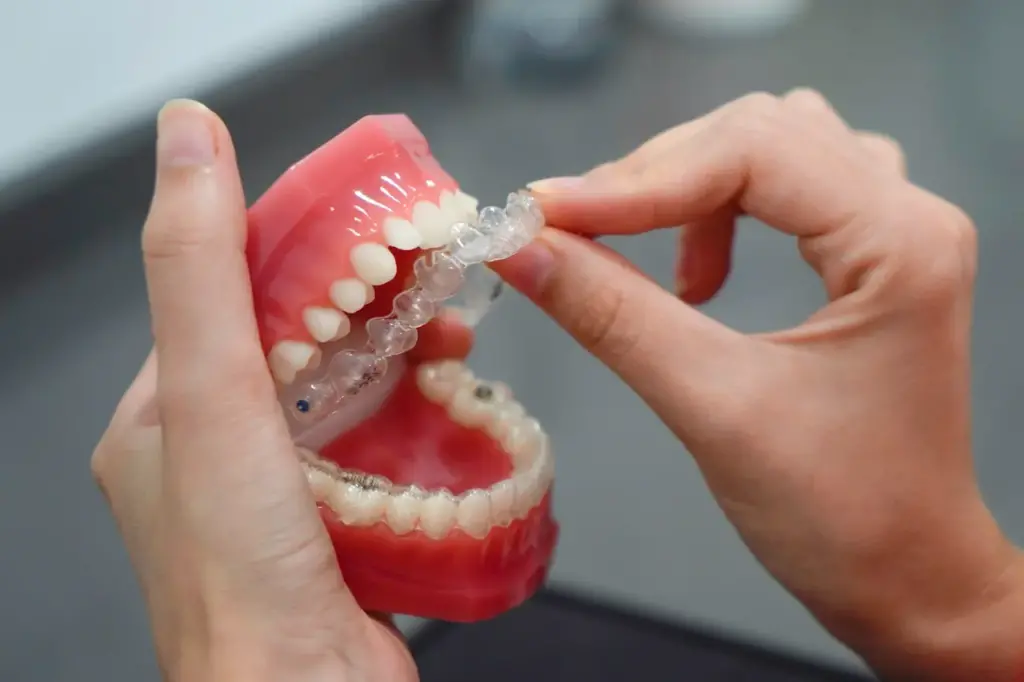
Invisalign: Pros and Cons
Invisalign is a great option for people who want to improve their smile or straighten their teeth. These benefits include:
Almost invisible treatment: It’s possible you don’t want others to know about your treatment. Invisalign’s clear trays are so transparent that no one can tell you are wearing them unless you choose to let others know.
Removable tray: Traditional metal braces cannot be removed until the treatment is complete. Food can get stuck in braces, which can make oral hygiene difficult. Invisalign allows patients to remove their trays while eating, brushing and flossing. This makes it easier for them to maintain good oral hygiene.
-
-
- Food restrictions are not necessary: Traditional braces often come with a list of foods that should be avoided, because they can become stuck. Invisalign does not have this problem. You can eat whatever you like and whenever you want.
- Improved c Comfort: Metal brackets can irritate the gums and poke inside your cheeks. Invisalign aligners come in a smooth plastic material that won’t chafe or poke.
- Safe Material: Invisalign trays are made of medical-grade plastic, which is BPA-free. It does not contain any other harmful toxins.
- Invisalign treatment is usually completed in 12 months as opposed to the 24 months required by traditional braces.
-
Cons of Invisalign
Invisalign is not without its downsides. If you’re considering Invisalign treatment, it’s important to know what its disadvantages are.
-
-
- How to get used to your aligners: Even though the clear plastic aligners can be comfortable, it may take a few days for you to adjust. You may need to wait a few days for the aligners to feel comfortable in your mouth. Wearing the aligners can sometimes cause a slight lisp.
- The success of your Invisalign procedure depends largely on how you wear the aligners. Wear the aligners every day for 22 hours. Many people do not wear their aligners as long as recommended and don’t see the results they expected. Wearing the aligners incorrectly can affect your treatment in several ways. Your teeth may not fit in the aligners if you don’t wear them enough. When people don’t follow instructions, the treatment time can be prolonged.
- Brush your teeth more often: Maintaining your teeth is important when you are undergoing Invisalign. Brushing your teeth is recommended after every meal, or after drinking or eating anything other than water. While having a toothbrush or toothpaste on hand can be a burden, they can improve your oral hygiene and your smile.
- How to deal with loose aligners Because the aligners do not attach to your teeth and are meant to be removed when you eat or drink, you may lose them.
- Payment for cost: Invisalign costs $5000 on average across the country. This is the same cost as traditional orthodontic treatment. In New York, the average cost of treatment is $6500. You can find lower prices than the average. Invisalign, for example, is available at $5,950. For more information, visit Invisalign Special.
-
The Perfect Candidate for Invisalign
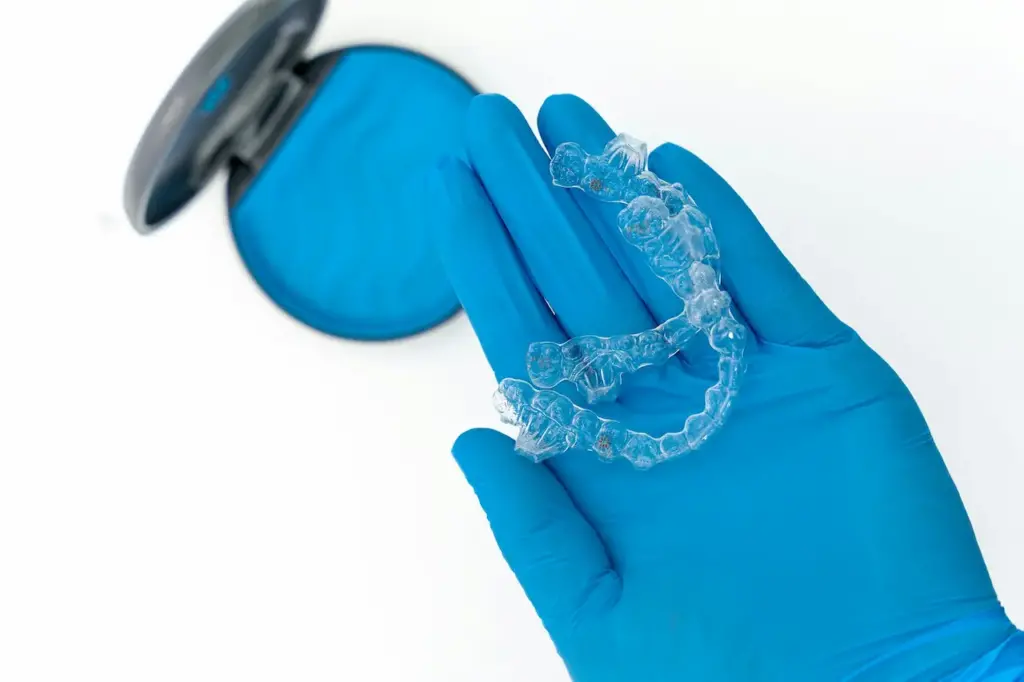
Invisalign may not be the best treatment for all patients. It is better suited to adult patients than children. The treatment is not suitable for children who have not yet developed all their permanent teeth.
Candidates for Invisalign must be fully committed to their treatment and follow all instructions given by the dentist. This includes visiting the dentist every six to eight weeks for a checkup and changing aligners according to instructions. The patient should know what to expect from the treatment. This includes how many office visits are needed to begin Invisalign, and how long the aligners will be worn.
Invisalign is not able to treat all dental issues. The aligners help straighten teeth, close gaps between teeth, and correct crowding. Treatment can correct certain types of bites like an overbite or underbite. People with severe malocclusions or teeth that are badly misaligned may not be eligible.
Veneers consist of thin porcelain sheets that are adhered to the front teeth. Veneers are used to improve the look of teeth. Veneers can be used to change the colour of teeth, cover up chips and cracks, or smooth the surface of a tooth. Veneers are also able to help close gaps or spaces between teeth and can change the size of teeth.
Veneers are applied in the dental office. The veneers require space, so the first step in the process is to file the front of the teeth. The dentist will then take an impression using either traditional moulds and putty or 3-D imaging.
The lab will use the impressions to make the custom-fit veneers for each patient. The dentist will provide a temporary veneer to wear while the permanent ones are being made.
Veneers have many advantages
Porcelain Veneers offer many benefits to patients who choose to have them.
-
-
- Veneers can solve multiple dental problems. They are a great cosmetic solution. They can, for example, whiten teeth, fill in a space, or hide a chipped or cracked tooth.
- Long-lasting: Although veneers are not permanent they can last a very long time with the proper care and treatment. The average porcelain can last up to 15 years.
-
- Enamel can erode in many ways. A veneer is a great way to restore damaged teeth and prevent further erosion.
- Improve your confidence. Whether you are whitening your teeth, correcting a crack, chip or any other issue with your smile, veneers will improve its appearance, giving you an increase in confidence.
-
Veneers: Pros and Cons
Porcelain Veneers are not perfect, but they do have their benefits. Veneers have some drawbacks.
-
-
- They are only cosmetic: Porcelain Veneers are designed to improve your smile. The veneers will not fix any underlying problems with your teeth such as an underbite, overbite or cavity.
- The colour of the teeth remains unchanged: Over time, your teeth’s colour changes due to diet and other factors. However, porcelain veneers remain the same. This is fine if veneers are placed on each tooth. If you have only one or two veneers, then the colour difference between your natural teeth and those veneers can be very noticeable.
- They don’t last forever: While veneers can last a long time with the right care, they were not designed to last your entire life. At some point, you will probably need to replace your veneers.
- They can chip or crack. Porcelain, while hard, is also breakable. You can chip or crack your veneers, especially if you bite your nails grind your teeth, or eat ice.
- They’re irreversible. Once you have them, you can’t reverse the procedure unless you want to replace the tooth.
-
Veneers: The ideal candidate
Veneers are best suited for people with healthy teeth or those who have not had significant dental problems. They want to improve their smile. Adults are advised to use veneers. The veneer is attached to the front surface of the teeth, so the teeth must be the full size before placing.
Veneers vs. Invisalign: What are the differences?
The most important thing to consider when deciding between Invisalign and veneers is the primary goal. Invisalign is a treatment that focuses on aligning teeth and correcting the bite. Both treatments can enhance the appearance of your smile. Veneers correct cosmetic issues such as colour, texture, and size.
Take a look at the five main differences between Invisalign and veneers.
1. Current Dental Health
Your current oral health may influence your decision on whether Invisalign or veneers are right for you. You must be in good dental and gum health to receive either treatment, as neither will fix issues like gum disease or tooth decay. Your dentist may recommend that you first treat any dental issues, such as cavities, before considering Invisalign or veneers.
2. Treatment Length
When comparing veneers with Invisalign, you should also consider the length of the treatment. Invisalign usually requires a longer time commitment. You must first visit the dentist for an initial consultation. Then, you will return for a subsequent treatment where the dentist will take a picture of your teeth, perform initial scans (or impressions if the dentist does not have an iTero scanner) and create a treatment plan. You will likely need to return to your dentist regularly for check-ups.
The entire treatment takes about 12 months if you follow the prescribed plan.
Veneers are applied in just two dental visits plus an initial consultation. The dentist will take an impression of your teeth and create beautiful temporary veneers during the first visit. You will be scheduled for a second appointment when the veneers have been created.
The dentist will then remove the temporary veneers and adhere to the permanent ones. He will also check your bite for comfort. Your dentist will need to be seen regularly to perform routine cleanings, and exams and to check the condition of your veneers.
3. Treatment Goals
The goal of treatment is what makes the biggest difference between Invisalign and veneers. Veneers are a good choice if you wish to whiten or repair a chip, crack or other damage. Invisalign will be the best option if you want to correct an underbite or overbite.
The two options are similar. Invisalign, for example, can close a gap between teeth. Veneers can also be used to cover the gap. Invisalign is recommended if your teeth are healthy and the alignment of your teeth is all that’s wrong. If you have stained or old fillings, porcelain veneers may be the better choice.
Below is an image that shows the ideal treatment goals for Invisalign. Invisalign’s treatment on the left shows a tooth structure that is aligned, with a corrected overbite. The veneer on the left shows a brighter smile after cosmetic adjustments.
4. Cost
The average Invisalign treatment is $5000. Porcelain veneers typically cost between $925 to $2500 per tooth. It can be less expensive to have a single tooth fixed with a porcelain veneer.
Many people require more than one veneer. This increases the price considerably. You should also keep in mind that you’ll most likely have to replace your veneers someday, which will increase the cost.
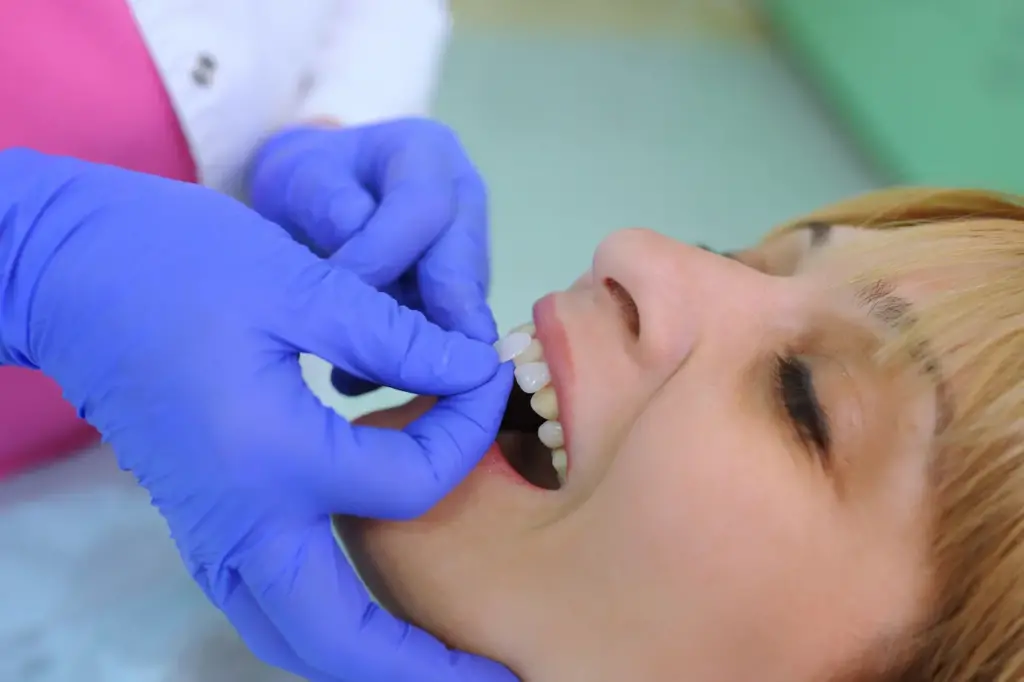
Commonly Asked Questions
Throughout the years, several patients have asked us the following questions regarding the requirements of veneers and Invisalign. Please feel free to contact us if you have any questions not answered below. We are happy to help in any way that we can.
Are straight teeth required for veneers?
Veneers can be applied to teeth that are not perfectly straight, but they will look more natural if your teeth are straight.
You may be aware that crooked, pushed-together teeth are more likely to break, chip or cause other oral health problems. Porcelain Veneers are a cosmetic procedure. They will not fix the problem at its root. In other words, porcelain veneers can look strange or out of place when paired with crooked teeth.
A slight misalignment, on the other hand, is no big deal. However, you should consult your dentist about whether veneers are right for you.
What if I have porcelain veneers?
Even if you have veneers, Invisalign can be used. However, it is best to install veneers after the Invisalign treatment. If you have veneers, you must explain why you would like to get Invisalign. You may be unhappy with your teeth’s size or shape. Are you unhappy with the size or shape of your teeth?
Your smile may look different as your aligners correct gaps, crookedness and bite problems. Veneers can be used to hide crooked or crowded teeth. Getting them straightened will completely change how they look. If you get Invisalign, there is a chance that your veneers will look too big or inappropriate after they are aligned. If you want to replace your veneers, it is best to wait until your teeth have been straightened.
Invisalign only straightens teeth, without changing their shape. If you are unhappy with your porcelain veneers, there are other cosmetic dentistry options available.

